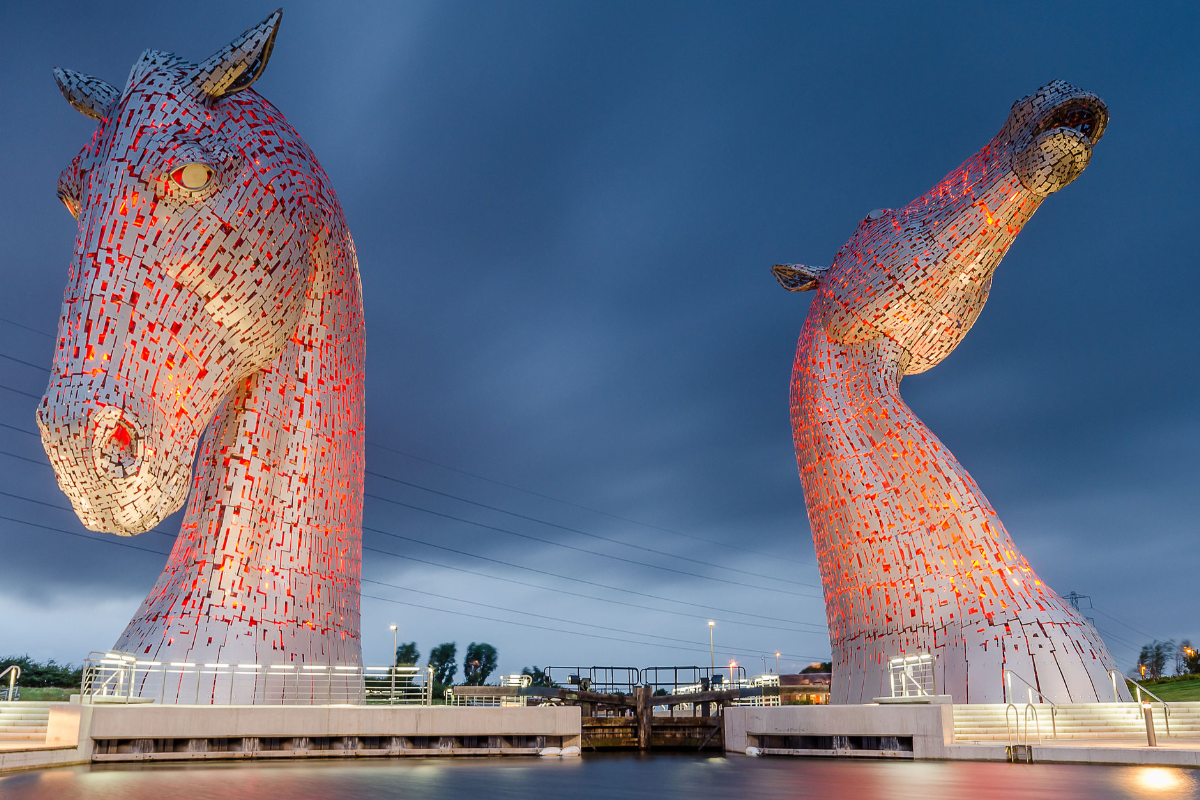
The Kelpies located near Falkirk, Scotland
Photo: Jonathan Combe via Flickr (CC BY 2.0)
Creative Scotland warns of ‘extremely challenging’ funding climate
The funder says it could be forced to reduce the number of organisations it supports if it does not recieve an uplift in funding from the Scottish Government.
According to details shared in its Annual Plan for 2023/24, published last week, Creative Scotland remains committed to providing multi-year funding for as many organisations as possible, but added the context for this is “extremely challenging” due to “significant budgetary and planning uncertainty”.
“We expect that without an increase in the funding we receive from the Scottish Government we will not be able to offer multi-year funding to the number of organisations that we currently do in future years,” the plan’s section on funding reads.
In the plan’s foreword, Chief Executive Iain Munro said the current funding climate is “placing a great deal of pressure on some of Scotland’s best loved and long-standing cultural organisations and the important work they deliver”.
READ MORE:
- Holyrood seeks cultural sector views on budget 'perfect storm'
- ACNI says government funding ‘simply not enough’
He added funding opportunities from sources outside government, both public and private, are “increasingly scarce”, with “considerable and increasing” demand from applicants to both open and targeted funding routes.
The warning comes as Creative Scotland plans its next multi-year funding stream, from April 2025, replacing its current programme which started in 2018 and funds 120 organisations. Application guidance for the next round is expected to be published on 26 July.
For this financial year, regularly funded organisations received standstill funding after plans to cut Creative Scotland’s budget from the Scottish government were overturned.
The reprieve came following public backlash and amid warnings Creative Scotland would be forced to reduce the number of regularly funded organisations if cuts went ahead.
In the annual plan’s foreword, Munro added that this standstill funding represents a reduction of over 20% in the current climate.
“The cultural sector as a whole, are still dealing with the dual challenges of the fallout from the COVID-19 pandemic and the ongoing cost-of-living crisis.
“Audiences are returning to cultural activity, but cautiously, and this continues to add to the long-term financial pressures being felt by the culture sector, on top of rising energy and operating costs.
“I’ve publicly described these factors as a ‘perfect storm’ and we continue to face the impacts of this storm in the period ahead.”
Priorities and KPIs
Elsewhere in the plan, Creative Scotland breaks down its continued priorities into four sections: equality, diversity and inclusion work; sustainable development; fair work; and international collaboration.
The objectives in each area feature key development activity for the financial year and work Creative Scotland will deliver alongside its partners.
This covers a range of activities, including developing and administering funding streams, outreach work and the delivery of programmes of work including the Gaelic Language Plan, Climate Emergency and Sustainability Plan and the national Youth Music Initiative programme.
The annual plan also shares a refreshed set of corporate Key Performance Indicators, agreed with the Scottish Government.
The funder will monitor its performance against the 12 refreshed KPIs for the first time in 2023/24, which will be reported in its annual review.
The indicators are aligned with the Scottish Government’s Culture Strategy for Scotland and address Scotland’s National Outcomes for five areas: Culture, Communities, Fair Work and Business Econonmy, Economy and International.
Join the Discussion
You must be logged in to post a comment.